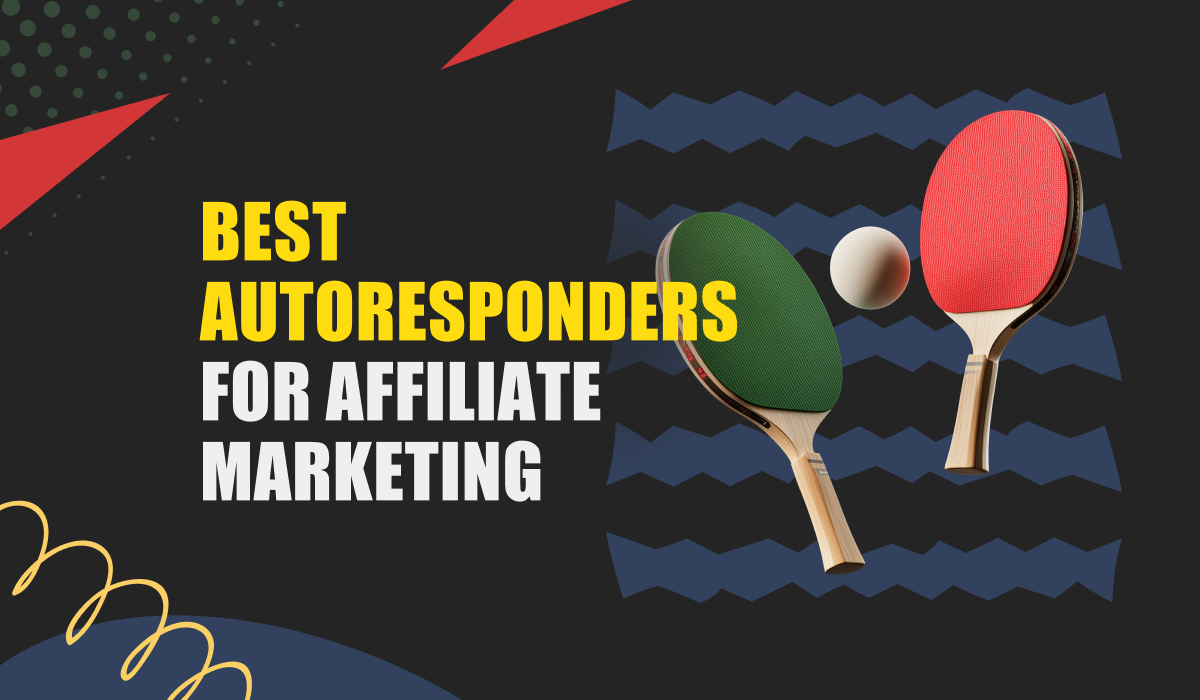Imagine having someone working for you 24/7 who’s tasked with keeping tabs on what each and every one of your subscribers is doing (or not doing) — and then take appropriate action to convince them to make a purchase. That’s autoresponders for affiliate marketing in a nutshell.
It’s an automation tool that’ll fire off an email based on a schedule or on a certain action that’s triggered by one of your subscribers (like if someone abandons their cart…makes a purchase…or hasn’t opened one of your emails in a while).
There are a lot of autoresponders out there, but not all of them are suitable for affiliate marketers. In fact, if you’re new to the industry, you might inadvertently sign up to use an autoresponder for affiliate marketing, only to find out that they’re just not designed for affiliates.
So, skip the hassle and read what we have to say. We’ll show you why you need to include autoresponders in your affiliate marketing mix. And we’ll walk you through the best paid and free autoresponder for affiliate marketing.
Table Of Contents
How Using an Autoresponder Can Boost Your Affiliate Income
We want you to be the most successful BizzOffers affiliate we’ve ever worked with. When you succeed, we succeed. So, anything we can do to steer your business to more growth and increased revenue is a good thing.

That’s why using autoresponders for affiliate marketing is key. If you’re new to autoresponders, here are 5 big reasons why you need to make it part of your marketing efforts.
1. Saves You Time
You’re busy. In fact, you probably barely have time to read this article. But you know it’s important, which is why you’ve carved out a few minutes of your busy day. You also know that email marketing is important, but you can’t be everywhere at once. That’s why autoresponders for affiliate marketing are so powerful. They take care of ensuring that you remain connected with your customers and that you’re able to respond to every action they take — even while you’re doing something else.
2. Keeps Your Audience Engaged
Consistent communication is everything in marketing. If you’re not talking to your customers and potential customers, someone else is. Engagement is especially important for affiliate marketing. The best free autoresponder for affiliate marketing can help make sure your customers remain connected to you and ensure that they are intrigued.
3. Helps You Target Your Audience Better
The person you just signed up isn’t the same as the person who just bought one of your products. And the person who just bought your product isn’t the same as the person who hasn’t read your emails in over a month. The right autoresponder for affiliate marketing can help you understand each and every one of your customers on a behavioral level and in terms of their interests. And that could lead to much better, more successful conversions.
4. Increases Conversion Rates
What happens when you first send an affiliate marketing email? Profits begin to roll in, right? Wrong. In fact, there’s a good chance nothing will happen when you first engage with a customer. But as you continue to understand them and communicate with them the right way, you’ll have a much more realistic shot at converting them to paying customers. A paid or even free autoresponder for affiliate marketings solution can help automate your communication patterns and make sure they remain engaged, ultimately leading to money in your pocket.
5. Works with Your Other Marketing Channels
Don’t think of autoresponders as a standalone solution. The best autoresponder for affiliate marketing campaigns works together with the rest of your marketing efforts, including social media, paid advertising, landing pages, and more. Mix them together and you’ve got the perfect recipe to grow your business.
The 6 Best Autoresponders for Affiliate Marketing
1. GetResponse
AI can be scary. But if you’re new to autoresponders for affiliate marketing, it can be your saving grace. That’s why GetResponse is so intriguing. The platform uses AI to create emails in seconds — each with AI-generated content, including subject lines. If you don’t have your own copywriter on staff, or you’re bad with words, GetResponse can be really helpful.

Standout features: The AI isn’t just some run-of-the-mill intelligence. GetResponse uses OpenAI to power its content. But it’s not just about AI. You’re also in control with customizable design templates.
Pros: We’re a fan of the high deliverability rates. It really is one of the most reliable autoresponders for affiliate marketing.
Cons: If you’re just getting started, you might find some features are a bit too advanced. Expect a learning curve if you’ve never used this type of software before.
2. AWeber
AWeber feels like the Honda of autoresponders for affiliate marketing. Why? Because it’s reliable. You don’t have to worry about complex setup. With AWeber, it’s a piece of cake to automate your email sequences. But it also feels like a Tesla with advanced functionality that’ll make you feel like your affiliate marketing is on autopilot.

Standout features: With AWeber, you can choose from several email templates. And their drag-and-drop editor will make you feel like a pro, even if you’ve never designed anything in your life. We really like being able to tag subscribers based on what they do and the powerful analytics that are both detailed and easy to understand.
Pros: It’s really easy to use, there’s a free plan, and the customer support is there when you need it.
Cons: We wish there were more integrations. Compared to some of the best email autoresponder for affiliate marketing services, it’s a bit lacking in that department.
3. EmailOctopus
If you’re looking for powerful automation, EmailOctopus is one of the best autoresponder for affiliate marketing services — and it should be on your shortlist. If you’re a small affiliate marketer, it’s hard to do several things at once. But with EmailOctopus, you’ll feel like you’re in control. It lets you put together welcome sequences, follow-up communications, and even drip campaigns — perfect for educating your audience and keeping them engaged.
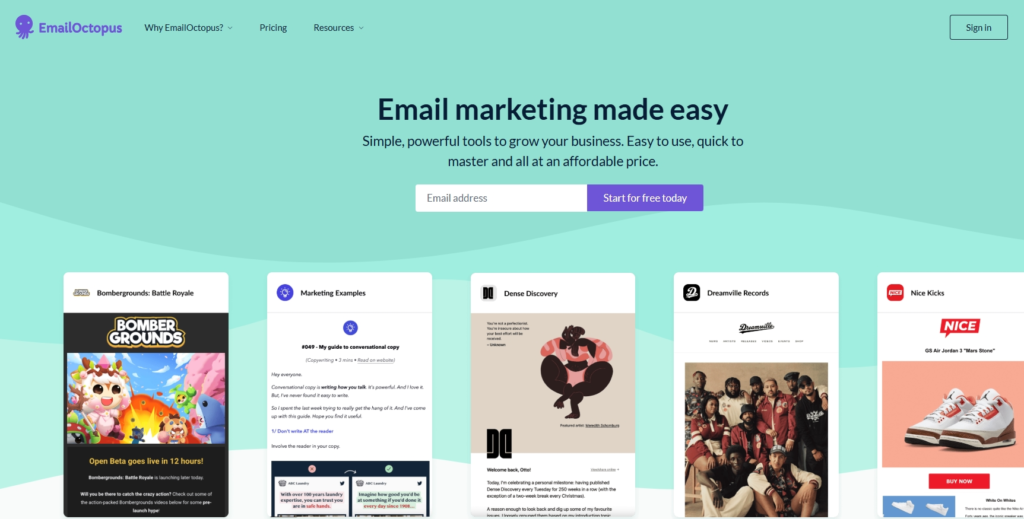
Standout features: The sign-up forms are really simple to use, and the service connects seamlessly with Amazon SES to ensure that your emails end up in your audience’s inbox.
Pros: Really affordable, so if you’re just starting out, you won’t break the bank trying to get up and running. And you can get going without any advanced tech skills.
Cons: The features aren’t as advanced as some of the competitors, and there aren’t tons of integrations.
4. MailerLite
On the hunt for the best free autoresponder for affiliate marketing? Consider MailerLite. Their tagline is “Email marketing, simplified” and they really eat, sleep, and breathe that ethos. You can get started for $0 (yes free) and send up to 12,000 monthly emails. You also get a drag & drop editor, comparative reporting, an email automation builder (perfect for autoresponder affiliate marketing purposes), and more.
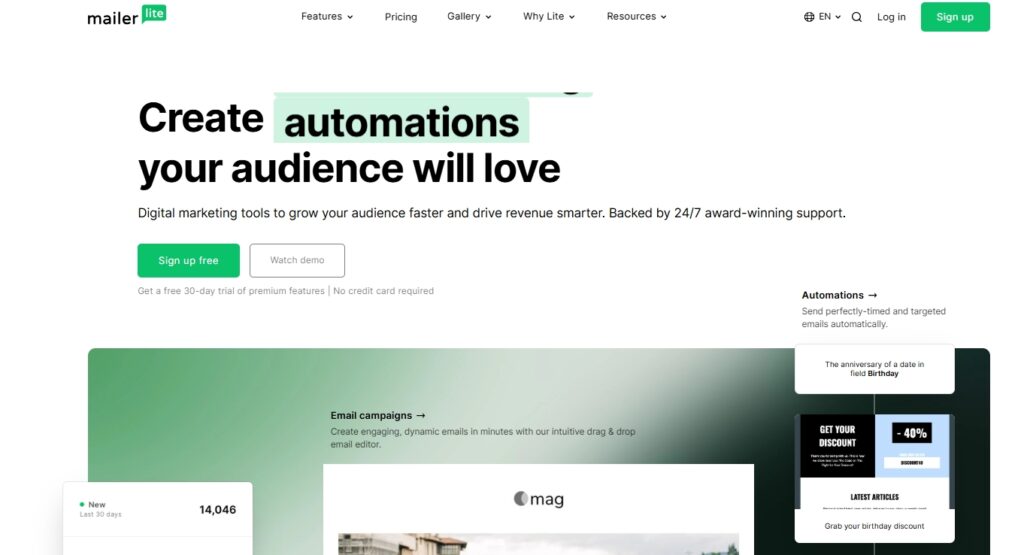
Standout features: That $0 fee we mentioned isn’t a trial price where they stick you with a monthly fee right after. If you’re happy with the service, you can keep using it for free, for good (or until they kill the free plan, but we don’t see that happening anytime soon).
Pros: We can’t say this enough. MailerLite costs $0 out of the gate.
Cons: There are some strict affiliate marketing policies in place, so make sure you read the terms & conditions before signing up to make sure you aren’t in violation. And be aware that advanced features are limited to paid plans, so if you’re looking for things like custom templates, you’ll need to pay.
5. SendX
Imagine being able to know what your subscribers are doing and being able to respond to them — all while you’re sleeping. It’s possible with SendX. With a robust rules-based interface, you can create customized workflows that work hard to massage your leads and turn them into subscribers and even re-engage users who are no longer paying attention.
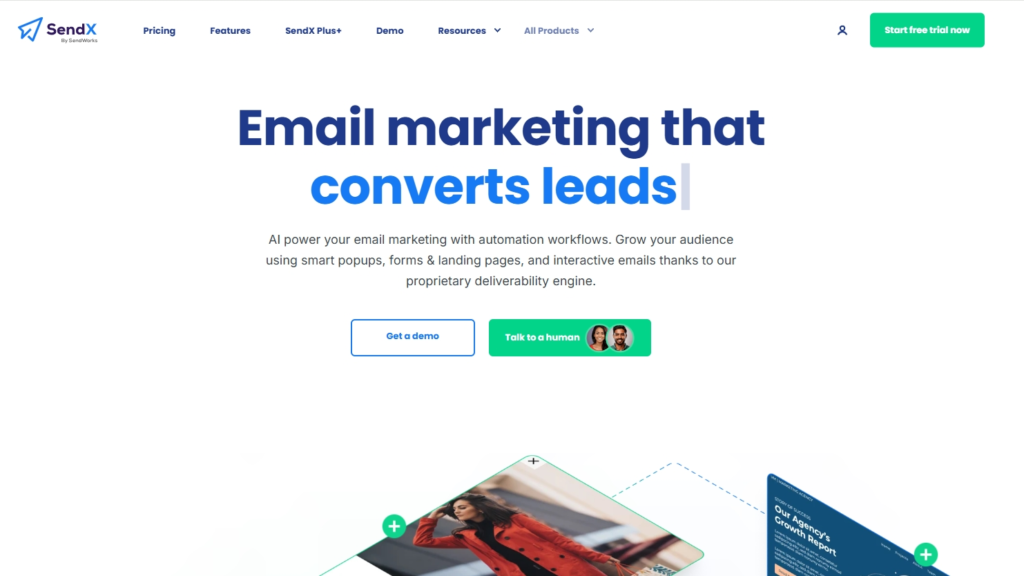
Standout features: SendX offers you access to over 500,000 stock photos to enhance your campaigns. And no matter which pricing plan you go with, you’ll have access to unlimited sends.
Pros: As the number of contacts in your database grows, so does your monthly fee. If you’re starting out with less than 1,000 subscribers, you’ll pay $7.49 a month. While the price can grow to over $140 per month, with that many subscribers, you’re probably doing well enough to move from the best free autoresponder for affiliate marketing to one that costs your business a bit of cash.
Cons: The reporting features aren’t as advanced as some competitors we’ve tested out.
6. Brevo
There’s a reason Brevo sounds a lot like ‘Bravo’. It’s because so many users applaud the service and rate it one of the best autoresponder for affiliate marketing solutions on the planet. It’s simple to use. It lets you store unlimited contacts. And it offers full email and analytics capabilities that even the most novice marketer can use. And because Brevo specializes in autoresponders, they really understand every touchpoint of the customer journey.
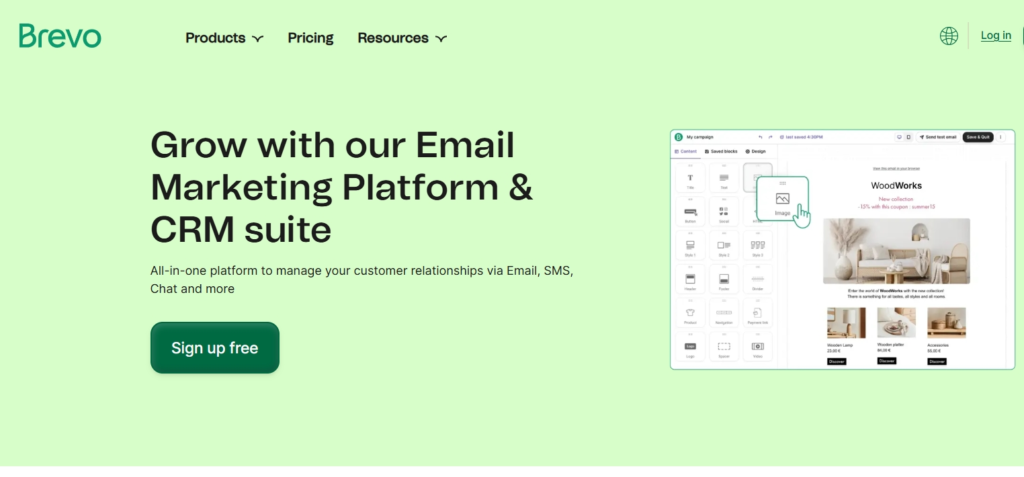
Standout features: You can add SMS and WhatsApp messages to your email series. The web push notifications support is a nice touch too. With so many extras included, it really is one of the best all-around solutions.
Pros: You can try their free autoresponder for affiliate marketing solution and send up to 300 emails per day.
Cons: If you’re opting for the free plan, you won’t be able to take advantage of the SMS and WhatsApp campaign features.
Take Some Time to Explore the Right Autoresponder for You
There are several free autoresponder for email marketing solutions — and some great paid options too. With free trials available for the paid options, it’s worth playing around to see what you’re comfortable with.
If you need help with your affiliate marketing efforts, a BizzOffers team member will be happy to answer your questions. Get in touch.


